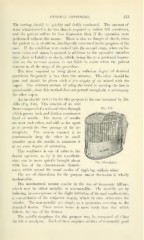Page 215 - My FlipBook
P. 215
GENERAL ANESTHESIA. 213
The cuttino; sliouKl \y^ tiuickly and deftly conducted. The amount of
ether administered i.s far less than is required to induce full anesthesia,
and the patient suffers far less depression than if the operation were
performed without this means. There is also no danger of shock, since
the patient is, or should be, intelligently concerned in the progress of the
case. If the condition were carried into the second stage, when excite-
ment exists and alarm is aroused in addition to the operative interfer-
ence, there is liability to shock, which, being due to a profound impres-
sion on the neryous system, is not liable to occur when the patient
concurs in all the steps of the procedure.
The time required to bring about a sufficient degree of dentinal
anesthesia frequently is less than two minutes. The ether should be
pure and should be giyen with a free supply of air mixed with the
yapor. The ordinary custom of using the towel to enyelop the face is
questionable, since this method does not permit enough air to accompany
the ether vapor.
An invaluable inhaler for this purpose is the one invented by Dr.
Allis (Fig. 159). This consists of an oval
frame composed of a series of wires through Fig. 159.
which passes back and forth a continuous
band of muslin. The layers of muslin
are near each other, and still so far apart
as to permit the free passage of the at-
mosphere. The correct manner is to
continuously drop the ether in small
quantity upon the muslin to maintain it
at an even degree of saturation.
This appliance is one of value to the
dental operator, as by it the anesthetic
state can be more quietly brought about
The Allis inhaler.
with less of the characteristic disturb-
ances which attend the usual modes of applying sulfuric ether.
The use of chloroform for the purpose under discussion is wholly
inadmissible.
The mechanical means consist in the use of temporary fillings,
which may be either metallic or non-metallic. The metallic act by
inducing, in consequence of the slight irritation of thermal conductivity,
a consolidation of the subjacent dentin, which in time obliterates the
tubules. The non-metallic act simply as a protective covering to the
denuded dentin. Their action hence is more tardy than that which
follows the use of the former.
The metallic stoppings for this purpose may be composed of either
tin foil or amalgam. Each of these requires cavities of reasonably good


